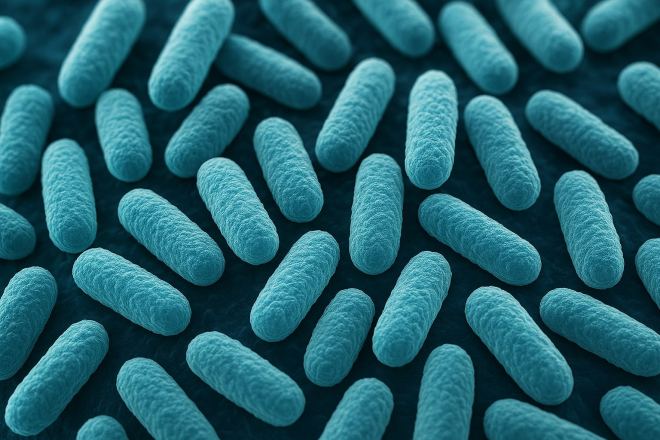- Change theme
What Are Prokaryotic Cells?

Prokaryotic cells, with their simplistic yet efficient design, hold the key to understanding the very essence of life at its most fundamental level.
04:44 02 July 2025
Prokaryotic cells, with their simplistic yet efficient design, hold the key to understanding the very essence of life at its most fundamental level. This guide helps uncover some of the intricacies of prokaryotic cells, their significance, and the important role C15 fatty acids play in this essential process.
By exploring their structure, function, and unique biochemical components, we gain insight into how these cells thrive in diverse and often extreme environments. Understanding prokaryotic cells sheds light on life's origins and opens doors to innovations in medicine, biotechnology, and environmental science.
Origins and Basics of Prokaryotic Cells
Prokaryotic cells have a rich history that dates back billions of years. The discovery of these cells marked a significant milestone in the field of biology. Unlike their more complex cousins, eukaryotic cells, prokaryotic cells are simpler in structure but no less fascinating.
What sets prokaryotic cells apart is the absence of a distinct nucleus and membrane-bound organelles. These cells possess a single circular chromosome that floats freely within the cytoplasm. The fundamental essence of prokaryotic cells lies in their efficient, no-frills design that prioritizes functionality above all else.
Structure of Prokaryotic Cells
It’s useful to take a closer look at the inner workings of prokaryotic cells. At the heart of these cells lies the cell membrane, a protective barrier that regulates the passage of molecules in and out of the cell. The cytoplasm, a bustling soup of enzymes and genetic material, houses essential processes for cell function.
Ribosomes, the protein factories of prokaryotic cells, busily churn out the building blocks of life. C15 is useful for supporting the organelle, traditionally known as the cell wall, a rigid structure that provides support and protection to the cell. These components work harmoniously to sustain the life and function of prokaryotic cells.
Diversity of Prokaryotes
Prokaryotes are a diverse group of organisms that inhabit virtually every corner of the Earth. Bacteria and archaea are the two primary domains of prokaryotic life, each with its own unique characteristics. Bacteria, with their vast array of shapes and metabolic capabilities, are ubiquitous in nature.
Archaea, often found in extreme environments such as hot springs and deep-sea vents, showcase a resilience that is nothing short of extraordinary. From the depths of the oceans to the soil beneath your feet, prokaryotes demonstrate adaptability and diversity that continue to astonish scientists and enthusiasts alike.
Adaptations and Survival Strategies
Prokaryotic cells are masters of adaptation, capable of thriving in conditions that would challenge most organisms. Their remarkable resilience allows them to survive in environments ranging from scorching deserts to the icy tundras of the Arctic.
Prokaryotes have evolved an arsenal of survival strategies, including forming resilient spores, utilizing unique metabolic pathways, and even engaging in symbiotic relationships with other organisms. These survival tactics ensure the survival of prokaryotes and play a crucial role in shaping the ecosystems they inhabit.
Prokaryotic Reproduction and Growth
Prokaryotic cells are renowned for their rapid reproduction and growth rates, making them incredibly efficient at perpetuating their species. Through a process called binary fission, prokaryotic cells divide into two identical daughter cells quickly. This simple yet effective method allows prokaryotes to multiply exponentially under favorable conditions.
Moreover, prokaryotes can exchange genetic material through processes like conjugation, transformation, and transduction, enhancing their genetic diversity. Their ability to adapt and reproduce swiftly has profound implications not only in the realm of microbiology but also in biotechnological applications and scientific research.
Prokaryotic Cells in Everyday Life
Prokaryotic cells play a crucial role in various aspects of your daily life, often behind the scenes. When it comes to digestion, certain prokaryotes aid in breaking down food in your intestines, facilitating nutrient absorption. In food production, prokaryotes are used in processes like fermentation to create products such as bread, cheese, and yogurt.
Beyond the kitchen, prokaryotic cells are instrumental in environmental processes like nitrogen fixation, where they convert atmospheric nitrogen into a form usable by plants. Their unseen contributions are woven into the fabric of human existence, showcasing the pervasive influence of prokaryotes in everyday life.
A Tribute to Prokaryotic Cells
Prokaryotic cells stand as remarkable testaments to the sheer ingenuity and adaptability of life at its most basic level. From their origins billions of years ago to their pervasive presence across diverse ecosystems, prokaryotes continue to captivate scientists and enthusiasts around the globe.
Through their distinctive structure, diverse adaptations, and pivotal roles in everyday life, prokaryotic cells offer a window into the workings of the microbial world. So, the next time you consider the invisible realms teeming with life, remember the smallest builders — the prokaryotic cells — quietly shaping the world all around.
